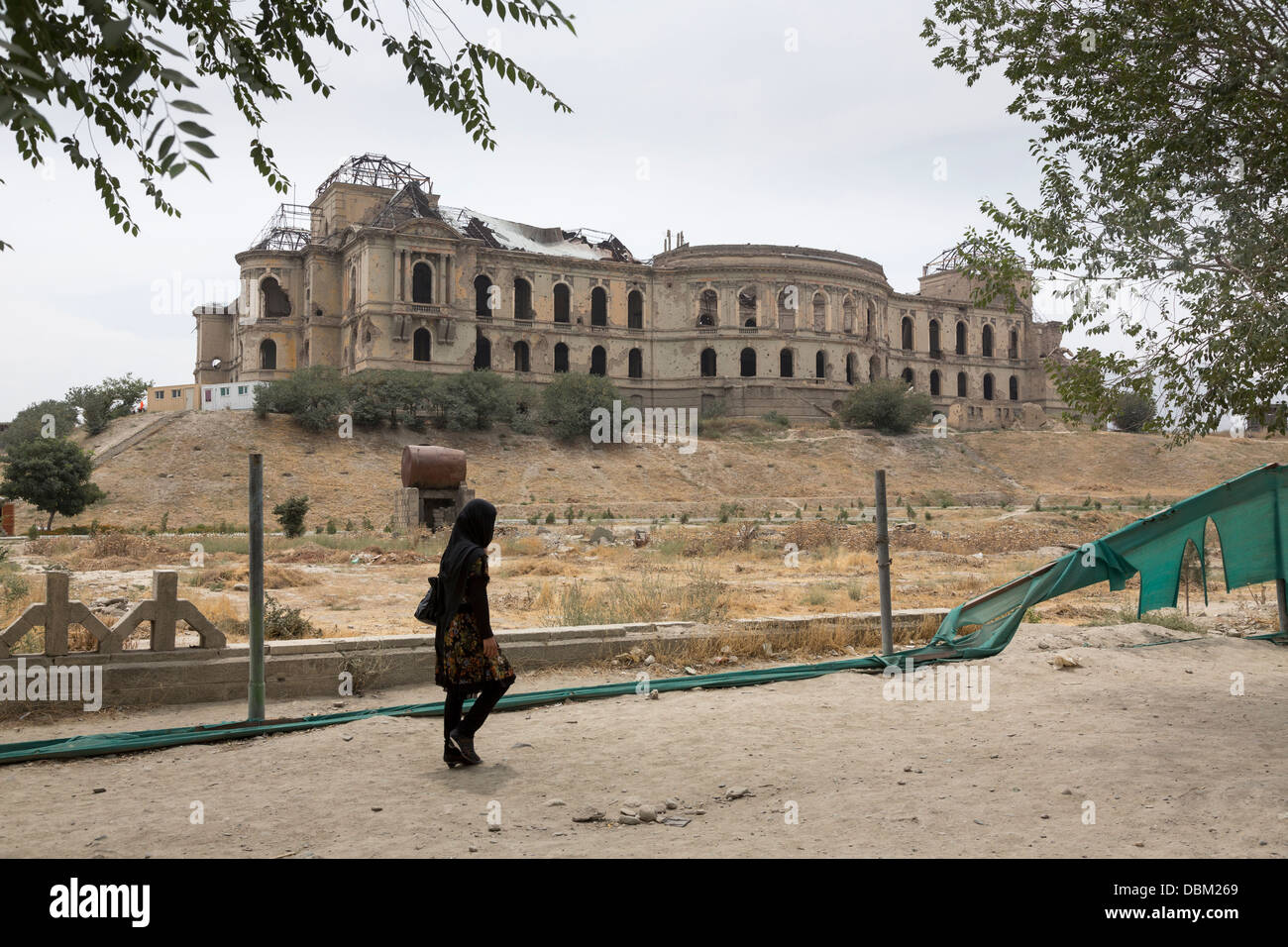Afghan woman walking by the ruins of Darul Aman Palace, Kabul, Afghanistan

Image details
Contributor:
B.O'Kane / Alamy Stock PhotoImage ID:
DBM269File size:
63.3 MB (3.6 MB Compressed download)Releases:
Model - no | Property - noDo I need a release?Dimensions:
5759 x 3840 px | 48.8 x 32.5 cm | 19.2 x 12.8 inches | 300dpiDate taken:
30 July 2013More information:
Darul Aman Palace ("abode of peace" or, in a double meaning "abode of Aman[ullah]") is a European-style palace, now ruined, located about sixteen kilometers (ten miles) outside of the center of Kabul, Afghanistan. Darul Aman Palace was built in the early 1920s as a part of the endeavours by King Amanullah Khan to modernize Afghanistan. It was to be part of the new capital city (also called Darul Aman or Darulaman) that the king was intending to build, connected to Kabul through a narrow-gauge railway. The palace is an imposing neoclassical building on a hilltop overlooking a flat, dusty valley in the western part of the Afghan capital. Intended as the seat for a future parliament outside of Kabul, the building was unused for many years after religious conservatives forced Amanullah from power and halted his reforms. Darul Aman Palace was first gutted by fire in 1969. It was restored to house the Defence Ministry during the 1970s and 1980s. During the Communist coup of 1978, the building was set on fire. It was damaged again as rival Mujahideen factions fought for control of Kabul during the early 1990s. Heavy shelling by the Mujahideen after the end of the Soviet invasion left the building a gutted ruin. In 2005, a plan was unveiled to refurbish the palace for use as the seat of Afghanistan's future parliament. It would be funded primarily by private donations from foreigners and wealthy Afghans. However, as of July 2013 there were no signs of the palace being refurbished. The palace was reportedly part of the targets in the attacks launched on 15 April 2012, for which the Taliban claimed responsibility.